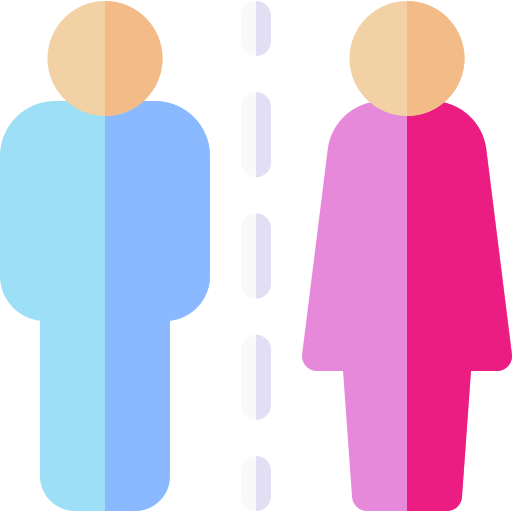Interpersonal communication skills or people’s communication skills are the most important part of the skills that employers seek for, these days. Recruiters seek for good communicators in their employees.
With this, we can conclude that good communication skills are very important in the workplace and play a crucial role in success.
We know that communicating is a two-way process of interaction between two or more people which involves the exchange of thoughts, ideas, information, or any other thing.
What is Interpersonal Communication?
Interpersonal Communication is the exchange of feelings, thoughts, ideas, information through verbal and non-verbal communication.
Not only what you speak but how you speak, your voice tone, facial expressions, body language, posture, personality, emotional state and intentions also give a message to the people (observer). We can say, communication can happen in this way as well. It is so because here the observer is receiving and processing/understanding these messages.
Elements of Interpersonal Communication

The Communicators
For communication to take place, there should at least be two people. They are known as communicators. One of them is known as the sender (of the message) and the other one is the receiver (of the message). Communication is misled as a one-way process of sending the message and receiving it.
It’s not the case. Communication is a two-way process where sending and receiving of the message is done simultaneously. First, the sender sends the message, then the receiver receives it, and then the receiver sends the message in the form of feedback. Feedback need not be verbal, it can be shown in different ways like nodding, smiling, and many more. Communication is thus an interactive process.
The Message For Communication
It is the thought, idea, information that is sent to the receiver by the sender. That information or idea or thought that is exchanged between them is the message. However, the message need not be verbal, it can be non-verbal in the form of body language, gestures, voice tone, expressions, and so on.

The verbal and non-verbal message can be related to understanding the emotional state of the person, underlying the message. We can say that non-verbal messages give additional information to the verbal one.
- Facial expressions express emotions like anger, contempt, joy, fear, disgust. facial expressions are basically related to emotions.
- Gestures are the movement of hands or head to give an idea or meaning to the message.
- Body language is a type of non-verbal communication in which physical gestures, expressions, and behaviors are caused to express the meaning or convey the underlying intention in the message.it can also be misled when the body language does not show the right intention of the message of the sender or the speaker.
Your tone of voice shows the characteristics of your voice, in both written as well as spoken. The role tone of voice plays in the communication process is the way you say it.
What you speak or write is the message but in what way you write and express it, give an impression on the receiver. The volume of your voice, the pace of the speech, inflection determines the tone of your voice.
Noise in Communication
In the process of communication, noise is anything that disrupts the sending and receiving of the message in the process. Noise can come from external sources as well as from internal sources.
External sources are the physical and environmental sound made from outside and internal sources are the mental disturbances going on in the mind of the speaker while speaking or sending the message or in the mind of the receiver while receiving or listening to the message. Noises can be physical, psychological, physiological, and semantic.
1. Physical
Noises coming from the automobiles, industrial sites and so on.
2. Psychological
Overthinking, thinking about something else, or any other mental disturbance like anger, or any emotional turbulence.
3. Physiological
Headache, stomach pain, hunger.
4. Semantic
Language barriers, signs, and symbols used in sentences, the same words with different meanings.
More of them are perception barriers, cultural barriers, gender barriers.
Feedback
Feedback is the response that the sender receives, by the receiver in response to the message he received. It conveys the idea of how the receiver has received and interpreted the message.
This helps the sender to modify or create the message in a different way if required. This also helps the communication process to go smoothly without any mistakes, keeping it clear.
In simple terms, feedback is the evaluation of the message sent to him. Feedback is divided into three categories (based on purpose) – evaluation, appreciation, and coaching.
1. Evaluation Feedback
Evaluation means analysis of the performance, comparison, rating, or ranking of the performance. And, evaluation feedback is the ranking or comparison of performance and then giving of the judgment on that basis. Taking the example of an employee, when the employer or the leader evaluates and gives evaluation feedback, the employee comes to know about his/her position, positive sides, drawbacks which enables him/her to improve, and know his position. The employee will feel reassured and have his expectations clear.
2. Appreciation Feedback
It is the type of feedback that employers want to give to the employees, thanking them for their efforts, performance, and contribution to the work. Acknowledgment and appreciation help encourage them and makes them more consistent in their work and improve themselves to do better.
3. Coaching Feedback
The form of feedback is different from evaluation and appreciation feedback. This form is giving reviews of the performance after evaluation of their performance and appreciating the same. This form typically is like customer feedback. Well, in this case, it’s the employer giving review or feedback on where the employee needs improvement or where he/she can do better. This helps improve their effectiveness.
Communication becomes more effective after giving feedback.
Process of Communication
The process of communication is also influenced by the factor – Context.
What is the Context in the Process of Communication?
Context, in the process of communication, can be situational, social, emotional, and relative. The situation or the place where the communication is taking place say, living room, office, roadside, or in the cafeteria. This influences the communication in a way. The social context, on the other hand, influences the communication process in ways like the role or position of authority and responsibility, the relationship between the communicators.
Channel of Communication

Here, the channel of communication refers to the physical channel through which the communication is taking place. It can be face to face conversation or the message could be sent via post (written form) or telephonic conversation or maybe text messages and so on.
Principles of Communication
To make the process of communication effective, one has to look upon some of the principles, which help in effective communication.
1. Principle of Clarity
This principle states that the message that has to be conveyed should be crystal clear for the receiver to understand the same meaning of the message as the sender does. The words used in the message should be known to both the parties and understandable by both in the same way. This will help to generate the expected response from the receiver and help in effective communication.
2. Principle of Attention
The attentiveness of the receiver helps in effective communication. This principle states that the receiver’s attention should be drawn towards the message, to make the process of communication more effective.
3. Principle of Feedback
According to this principle, the receiver of the message should provide informative feedback so that the sender comes to know if the message is understood by him/her with the same meaning as the sender wanted to.
4. Principle of Informality
This principle states that informal communication proves to be more effective than formal communication. Management should always try to convey the decisions, policies, and ideas through informal communication, as it helps them get employees’ views and feedback.
5. Principle of Consistency
This principle says that the message conveyed during the communication process should stay consistent with the programs, policies, and objectives of the company. If they do not maintain that consistency, then there may be confusion in the mind of employees and they will lack in their performance due to that confusion.
6. Principle of Timeliness
In an organization, communication (decision making) should be done on time, without any delay to implement the decisions. This helps in implementing the plans and making improvements on time.
7. Principle of Adequacy
Having half information is poisonous than having no information. To make the communication effective in all respects, the information or ideas shared (message) should be adequate to avoid any delay or confusion. Proper information is important for making better decisions and it also affects the performance.
Reasons which act as a barrier to Effective Communication

1. Use of Jargon
Usage of complicated words or unfamiliar words while conveying a message.
2. Language Barriers
Use of different languages or the same words with different meanings in different languages which will cause confusion and make communication less effective.
3. Psychological Barriers
The receiver’s psychological state can influence the communication process. Anger, frustration, distraction, stress, and negativity can strongly influence communication. The response could be different, not as per expectations.
4. Physical Barriers
Outside noise, distractions, geographical distances, channel disruption.
5. Attitudinal Barriers
Negative attitude, poor management, no flexibility, taboos, prejudices.
6. Cultural Barriers
The difference in behaviors and settings of different cultures can have effects on communication.
Overcoming Barriers in Interpersonal skills
- Active listening
- Attentiveness
- Clear messages
- Avoid using jargon
- Knowing other cultures better
- Using simple language
Interpersonal Skill Self-Assessment
Analyzing and improving one’s skills is of a great deal at the workplace, at home, and almost everywhere in life.
Here are some tips/tricks/questions that will help you to self analyze one’s skills and help improve them.
- Analyze your listening skills.
- How often do you interrupt the speaker?
- Do you use gestures as a response to the speaker while he/she is speaking?
- How attentively do you listen?
- Do you try to understand the speaker’s perspective?
- Focus on verbal communication.
- Try communicating and brushing up your skills in a group.
- Build your self-esteem, have confidence.
- Analyze your emotional intelligence.
Ladder of Inference in Interpersonal Communication
The ladder of inference is like the reflex action of our thought process. The way we think and process information or any message and come to a conclusion of taking action or decision or giving some response is the ladder of inference. The ladder of inference-
- Realizing the reality and facts
- Selection of facts and reality on the basis of our own experience and beliefs
- Interpreting their meaning
- Inclusion of assumptions
- Developing conclusions
- Believing in the conclusion
- And taking actions based on the concluded belief.
Frequently Asked Questions:
Ans. The Major Elements of the Interpersonal Communication Model. The interpersonal communication model looks simple having only six major elements: a sender, a receiver, a medium, encoding and decoding and feedback.
Ans. Some examples of interpersonal skills include:
a) Active listening
b) Teamwork
c) Responsibility
d) Dependability
e) Leadership
f) Motivation
g) Flexibility
h) Patience
Ans. Interpersonal communication is the process by which people exchange information, feelings, and meaning through verbal and non-verbal messages: it is face-to-face communication. Although no communication may be intended, people receive messages through such forms of non-verbal behavior.
Ans. The 7 C’s of effective communication are –
a) Completeness
b) Concreteness
c) Courtesy
d) Correctness
e) Clarity
f) Consideration
g) Conciseness
h) Creativity
Ans. Here are the tips for improving your Communication Skills:
a) Make communication a priority.
b) Simplify and stay on message.
c) Engage your listeners or readers.
d) Take time to respond.
e) Make sure you are understood.
f) Develop your listening skills.
g) Body language is important.
h) Maintain eye contact.
Ans. Here are five ways you can begin improving employee development at your company:
a) Offer professional training from the get-go. Let’s get the obvious stuff out of the way.
b) Help your managers be better coaches.
c) Enhance cross-departmental collaboration.
d) Emphasize soft skills.
e) Invest in personal development.
To know more about other soft skills do check out these blogs:


Pingback: Teamwork | Importance of Teamwork | Soft Skills | Thinkerspoint
Pingback: Soft Skills | Importance of soft Skills | Thinkerspoint